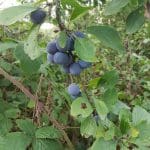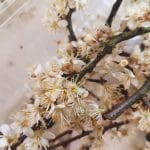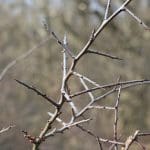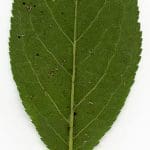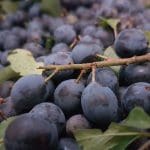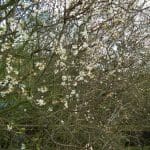Blackthorn / Spring / Summer / Autumn / Edible
Blackthorn is a fairly common member of the Prunus family, it is normally found as a shrub but it can grow as a tree up to 6m tall.
Common Names
Blackthorn, sloe
Botanical Name
Prunus spinosa
Scientific Classification
Kingdom – Plantae
Order – Rosales
Family – Rosaceae
Physical Characteristics for Blackthorn
Leaves
Deep green, oval, serrated up to 2cm long.
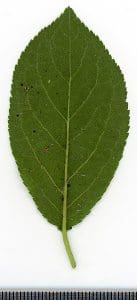
Flowers
The flowers appear in spring before the leaves, 1.5cm across, with five off-white petals.
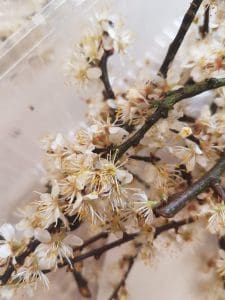
Fruit
Dark blue to black fruit 1-2 in diameter with a pale ‘bloom’. They have one big seed or pit in the middle, very much like a small plum.
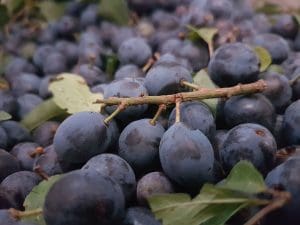
Bark
Dark brown/purple/black with vicious thorns hence the name blackthorn.
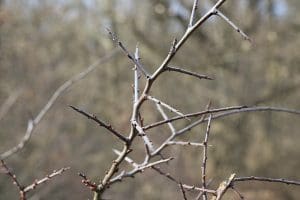
Habitat
It’s typically found on the edges of woodlands and meadows or in hedgerows.
Known Hazards
Beware of the long thorns. Thick gardening gloves are recommended. Blackthorn scratches often get infected, and if not treated can cause sepsis. Always seek medical attention if a scratch or puncture wound doesn’t heal, stays red and hot for more than a day, if there is pus, and especially if you see the redness and heat starting to spread.
Could be Confused with…
Other members of the Prunus family for example Damsons but they are all edible.
Purging Buckthorn (Rhamnus cathartica) is a look-a-like as both are thorny shrubs with dark berries, but key differences include: Purging Buckthorn has more slender, oppositely arranged leaves with finer teeth compared to Blackthorn. Also Purging Buckthorn tends to have longer, more prominent thorns than blackthorn.
Edible Uses
Famous for making sloe gin but can be stewed and added to pies and crumble etc. A jelly made from the fruit is nice served with pork or game.
Leaves can be used to make teas.
In the 19th century the French used the pickled, unripe fruit as an olive substitute.
The berries are best after the first frost but if you are impatient you can freeze them yourself at home.
Notes on Herbal Uses
The berries are high in antioxidant compounds phenols and flavonoids which are thought to have many health benefits. The berries have been used to treat diarrhea whilst the flowers can be used as a laxative. The peeled bark boiled in water was an old remedy for bronchitis.
Extra notes from the Foragers
Blackthorn wood burns slowly with a good heat and little smoke. The wood takes a fine polish and is used for tool handles and canes.
The wood has also traditionally been made into walking sticks or clubs including the famous Irish shillelagh.



